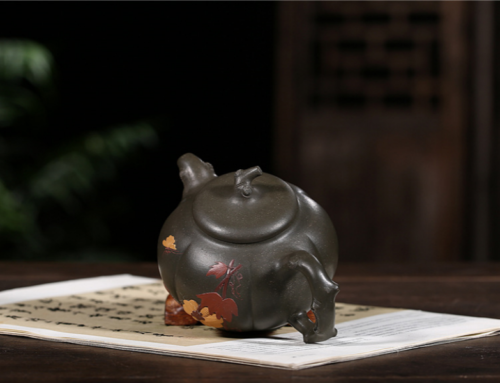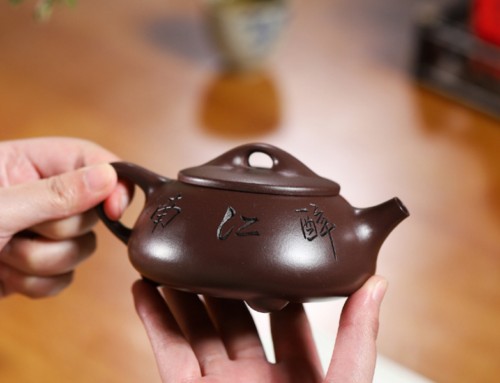Take Care of Your Asian Teapot: Tips on How to Make it Last
Introduction
Asian teapots are not just vessels that hold and brew tea. They are works of art formed by centuries of tradition and culture. Teapots in China, Japan and Korea are treated and admired not only for their essential function in brewing tea but also for their beauty and cultural significance in tea culture. However, with owning an Asian teapot, comes with the responsibility to care for your teapot so that it stays beautiful and lasts for a long time.
Throughout the article, we’ll provide you with practical and insightful cleaning, storage, and usage methods for your Asian teapot. Whether you’re a seasoned tea lover or a beginner to the world of Asian teapots, this guide will help you preserve your teapot for years to come. Let’s explore the world of caring for these timeless treasures!
Understanding your Asian teapot
Asian teapots are available in a variety of materials and styles, and each has its advantages and characteristics. Here are some of the most popular types.
Types of Asian Teapots
| Column 1 | Column 2 |
|---|---|
| Column 1 Value | Column 2 Value |
Materials And How They Affect Care
The material of your Asian teapot plays a big part in caring for it. Below is a guide:

The first step in teapot care is knowing what kind of teapot you have, what it’s made from, and adjusting your care to meet its particular needs.
How to Clean Asian Tea Pots
Daily Maintenance
Regular maintenance is necessary to keep your Asian teapot in good condition over time. Rinse your teapot thoroughly with warm water after each use to remove any residual tea leaves and oils. If your teapot is made from a porous material like Yixing clay, refrain from using detergent as it can be absorbed and affect the taste of your future brews. Use a soft brush or cloth to gently scrub the interior, allowing the teapot to retain its natural seasoning.
Gentle rinsing and a soft cloth are typically all you need to clean porcelain or glass teapots, but if your teapot has intricate designs or hard-to-clean nooks and crannies, consider using a soft-bristled brush to get the job done without scratching or nicking the surface. Key Tip: Make sure that your teapot is completely air-dried after use to avoid any problems with mold or bacteria.
Remove stains and build-up
If there are stains or build-up from minerals, use some warm water and some white vinegar to soak your teapot for 30 minutes and then buff the stains away with a soft cloth or brush. Be sure to rinse well afterwards to get rid of any vinegar.
If it is hard water mineral build up you can make a baking soda paste with warm water and use it in place of the lemon. This is most effective if you have full access to rub on the stains directly with your hands. Let the baking soda and water paste sit for 15 minutes before scrubbing away the stains. Avoid strong abrasive cleansers that may scratch delicate porcelain or glass teapots.
Taking these steps to clean your teapot will ensure that yours is shiny and operational for years to come.
How to store it

Best Storage Conditions
Storing your Asian teapot properly is the best way to prevent damage and keep it in good condition. Fragile teapots made of porcelain, glass, or other materials should be kept somewhere safe and separate from heavy objects or areas with heavy foot traffic where accidents are more likely to happen. Padded shelves or closed display cabinets are great options for preventing cracks and chips. If your teapot includes a lid, ensure that it is placed securely or stored separately so that it won’t fall and break when the teapot is being handled.
Humidity is the concern, especially in the case of cast iron teapots.
Moisture collected leads to trouble, because any water which ends up on a cast iron teapot will cause rust, which will damage the appearance and usability of a teapot. Store cast iron teapots in a dry environment, and keep from sealing them in closed storage containers—the presence of even small amounts moisture inside a sealed container can act to cause rust. Yixing clay teapots should also be completely dried out before storage, because of the possibilities of mold damage and unwanted smells making their way into the teapot over time, if a teapot is put into storage with moisture still in it.
Stop Rust & Damage in Its Tracks

Keeping your teapot stored in this way will help it stay beautiful for years to come!
using your teapot
Good Brewing Techniques
How to brew loose leaf tea in Asian teapot Brewing tea in an Asian teapot is an art, and you should always follow proper brewing techniques for your teapot type if you wish your teapot to last for years. Common recommendation for Yixing clay teapots is to brew one type of tea in one teapot, for example oolong or pu-erh. Why? Clay is porous and aromas and flavors of one tea will impact the flavor and aroma of another. It’s best not to brew either flavored teas or herbal blends as this may allow the oils to interfere with natural seasoning.
First-Time Use Instructions

By taking these steps, you will be protecting both your tea-drinking experience and your teapot from going through unnecessary wear and tear.
Longevity increased by regular maintenance
| Material | Heat Retention | Flavor Enhancement | Durability | Price Range | Maintenance |
|---|---|---|---|---|---|
| Yixing Clay | Excellent | Superior | Very High | $50-$10,000+ | Minimal |
| Porcelain | Good | Neutral | High | $20-$500 | Easy |
| Glass | Fair | Neutral | Medium | $15-$200 | Easy |
| Stainless Steel | Good | None | Very High | $25-$150 | Easy |
| Cast Iron | Excellent | Minimal | High | $40-$300 | Moderate |
Routine Checks
Periodically inspecting your teapot carefully to make sure any problems while they are still small can help prolong both the health of your Asian teapot and your usage of your favorite pots. Start by looking over the outside of your teapot for any external cracks, chips or discoloration in the teapot. For Yixing clay teapots, check the patina of the teapot for any unusuality. A well-seasoned teapot should have an smooth, glossy patina, while one with irregular patches may indicate a problem with cleaning and storing the teapot.
Routinely inspect the condition of your teapot before and after you use it. Look for signs of rust on cast iron teapots in particular. These teapots are especially prone to this type of damage. Check around the lid and the spout for signs of rust. If you see any, take measures to stop the damage from spreading. Check glass teapots for scratches or cracks that might create a weak spot and cause the glass to break during use. A regular visual inspection can help you stop any damage before it begins to compound.
Dealing with Rust & Repairs

Giving maintenance priority and addressing issues promptly will ensure that your Asian teapot continues serving you for many more years or generations.
Conclusion
In Asia, teapots are loved and enjoyed. Caring for teapots is a daily occurrence in countries around the world. Asian? I love teapots. teapots is never just something that we use to brew tea — they are cultural icon that showcase the beauty of craftsmanship or tradition. We love the teapots and cherish them as much as we enjoy using them. Taking care of your teapots should not only be seen is mundane or out of necessity, but as an extension of appreciation for your teapot. By regular cleaning your teapot, store your teapot properly, use your teapot mindfully, and taking care of your teapot regularly, you can continue to be rewarded with its functionality, beauty and emotional value over years to come.
Whether it’s a Yixing clay teapot that cleverly absorbs the aroma and flavors of your tea; a cast iron teapot that keeps water piping hot or the beautiful porcelain teapot that looks too good to stash in cupboard; looking after your teapot in the right way will ensure that it keeps going for a lifetime. Follow the tips in this article and your teapot will brew you the most delicious tea time after time and become an asset to any tea session.
So, love your teapot and treat it as something greater than the sum of its parts. When treated well, an Asian teapot can become a timeless companion to your tea journey, releasing harmony and joy into every sip.






